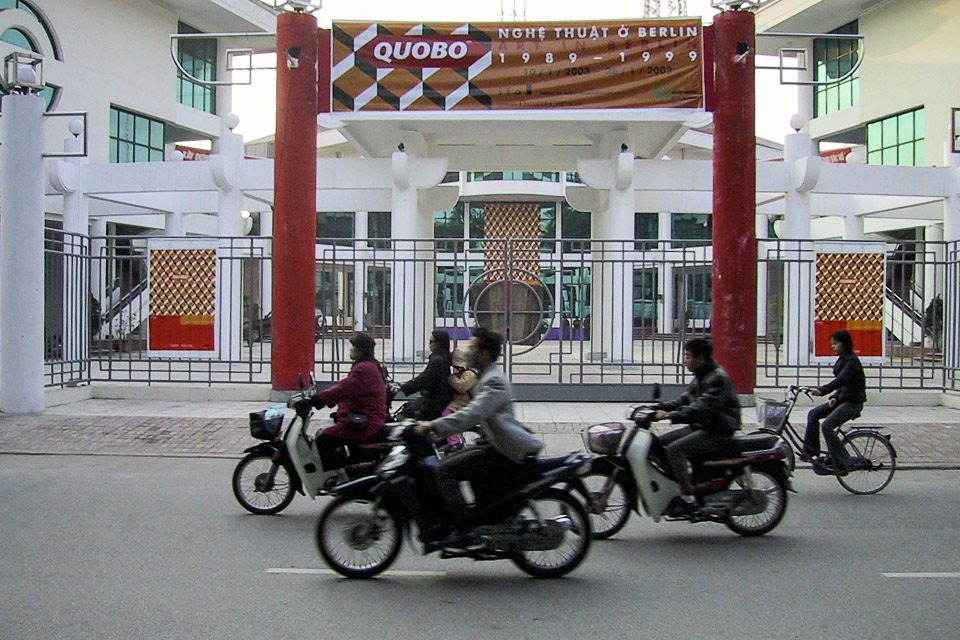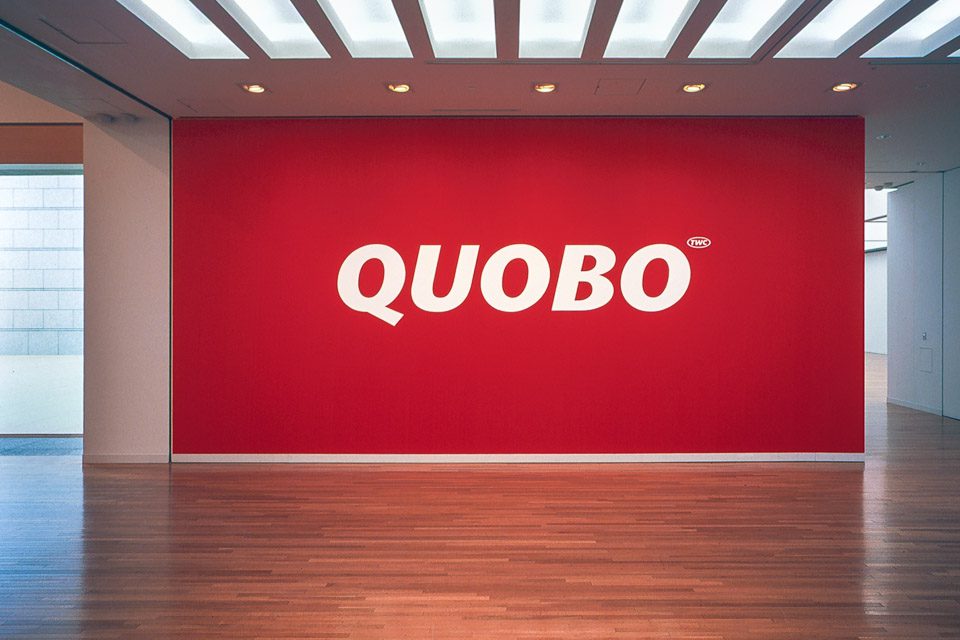QUOBO
An Exhibition by the Institute for Foreign Cultural Relations (ifa)
➚ QUOBO
QUOBO and The Word Company – Interview Harald Fricke/Adib Fricke
QUOBO – Art in Berlin 1989–1999
Participating artists: Fritz Balthaus, Annette Begerow, Monica Bonvicini, Maria Eichhorn, Nina Fischer/Maroan el Sani, Adib Fricke, Ulrike Grossarth, inges idee, Laura Kikauka, Karsten Konrad, Carsten Nicolai, Albrecht Schäfer, Eran Schaerf, (e.) Twin Gabriel, curated by Gabriele Knapstein and Ingrid Buschmann
Exhibition sites: Museo de Arte de Lima, Lima 2008 / KUMU Art Museum, Tallinn 2007/08 / Staatliches Kunstmuseum Nowosibirsk, Nowosibirsk 2007 / Contemporary Art Centre CAC, Vilnius 2006/07 / Muzej istorije Jugoslavije, Beograd 2006 / Galerie des bulgarischen Kuenstlerverbandes, Sofia 2006 / Museo de Artes Visuales, Santiago Centro 2004 / Museo de Arte Carrillo Gil, Mexico City 2003 / Van Ho Exhibition Center, Hanoi 2003 / Museum of Contemporary Art, Tokyo 2002 / Sungkok Art Museum, Seoul 2002 / Waikato Museum of Art and History, Hamilton 2001/02 / Nationalgalerie im Hamburger Bahnhof, Museum für Gegenwart, Berlin 2001 / Museum National Jakarta, Jakarta Pusat 2001 / Pao Galleries, Hongkong Arts Center, Hongkong 2001
“With the fall of the Berlin Wall in November 1989 a process of political, social, economic, and cultural change began — a state of permanent restructuring which is still going on today in Berlin. On 9 November the island status and the East-West division of the city, both defined by the Wall, suddenly came to an end overnight, and in the eastern as well as the western part of the city the firmly established structures were set in motion. The subsequent phase of restructuring was brought to a preliminary conclusion in the autumn of 1999: with the federal government’s move from Bonn to Berlin, the city regained its functions as capital and the structures which had developed in the 90s began to become consolidated.
For art in Berlin, the years of upheaval between 1989 and 1999 brought drastic changes. Not only did a new generation of artists from East and West Berlin emerge at the end of the 80s, the city also became more and more a centre of attraction for artists from other parts of Germany and abroad. In the course of reconstructing the city, numerous sites which could be used temporarily were found and then occupied by artists and artist projects. The non-institutional structures which emerged contributed considerably to the multiplication and acceleration of art production. This development took place on what was originally wasteland and in ruins and unrenovated buildings in Berlin-Mitte, or downtown Berlin. In the course of the 90s Berlin-Mitte then became a centre of attraction for a new art and gallery scene that settled in the reconstructed apartment buildings and lofts.
Various exhibitions about contemporary art in Berlin have focused on the latest developments emerging from the charged arena where art, architecture, film, fashion, design, and club meet, which the many artists who moved to Berlin in recent years helped to shape. In addition to these developments, this Institue for Foreign Cultural Relations (ifa) exhibition also takes into account the artistic positions that were being generated in the 80s, ones that prepared the ground for the extraodinarily diverse composition that is art in Berlin today. ...”
More on the ➚ QUOBO website





